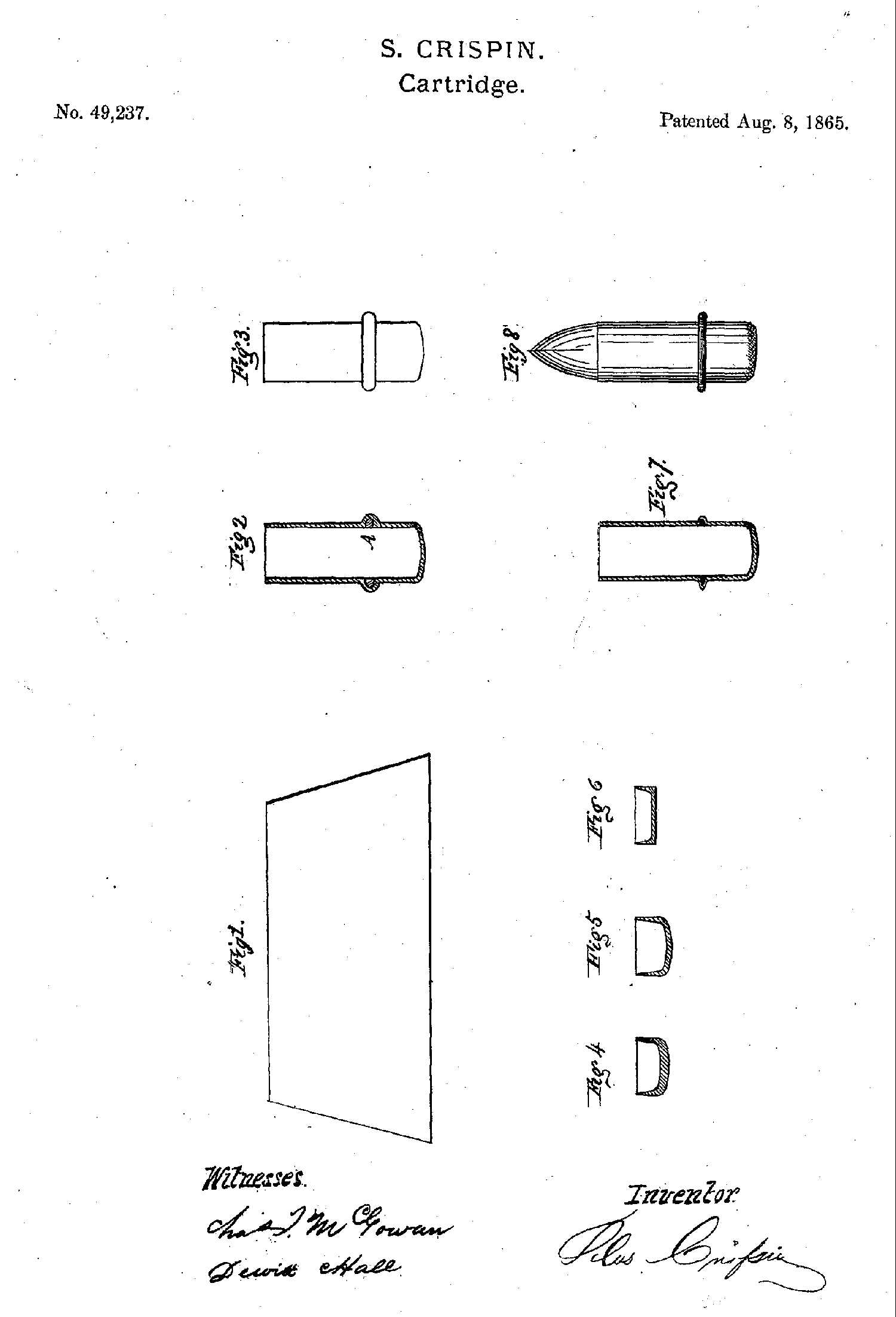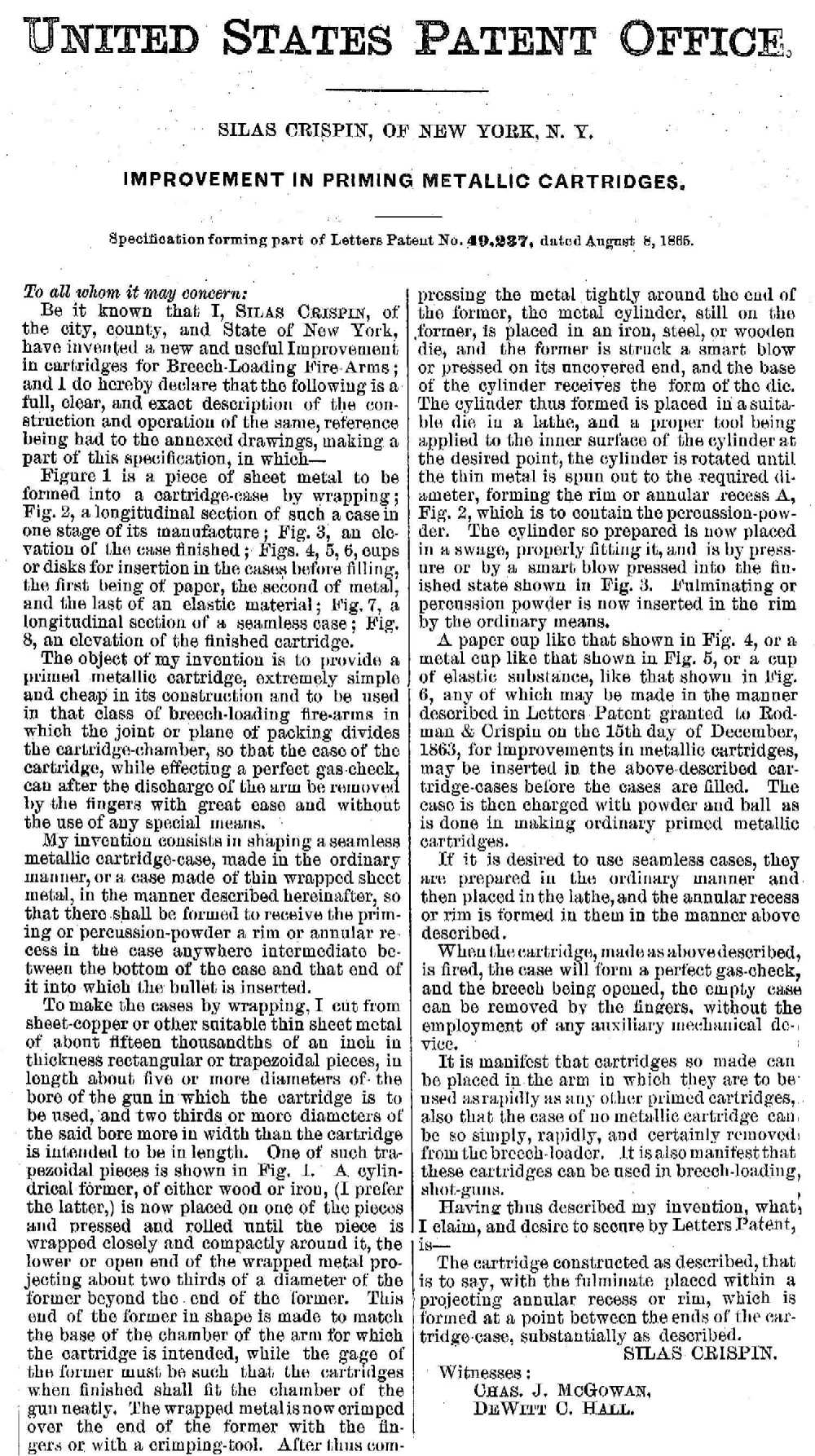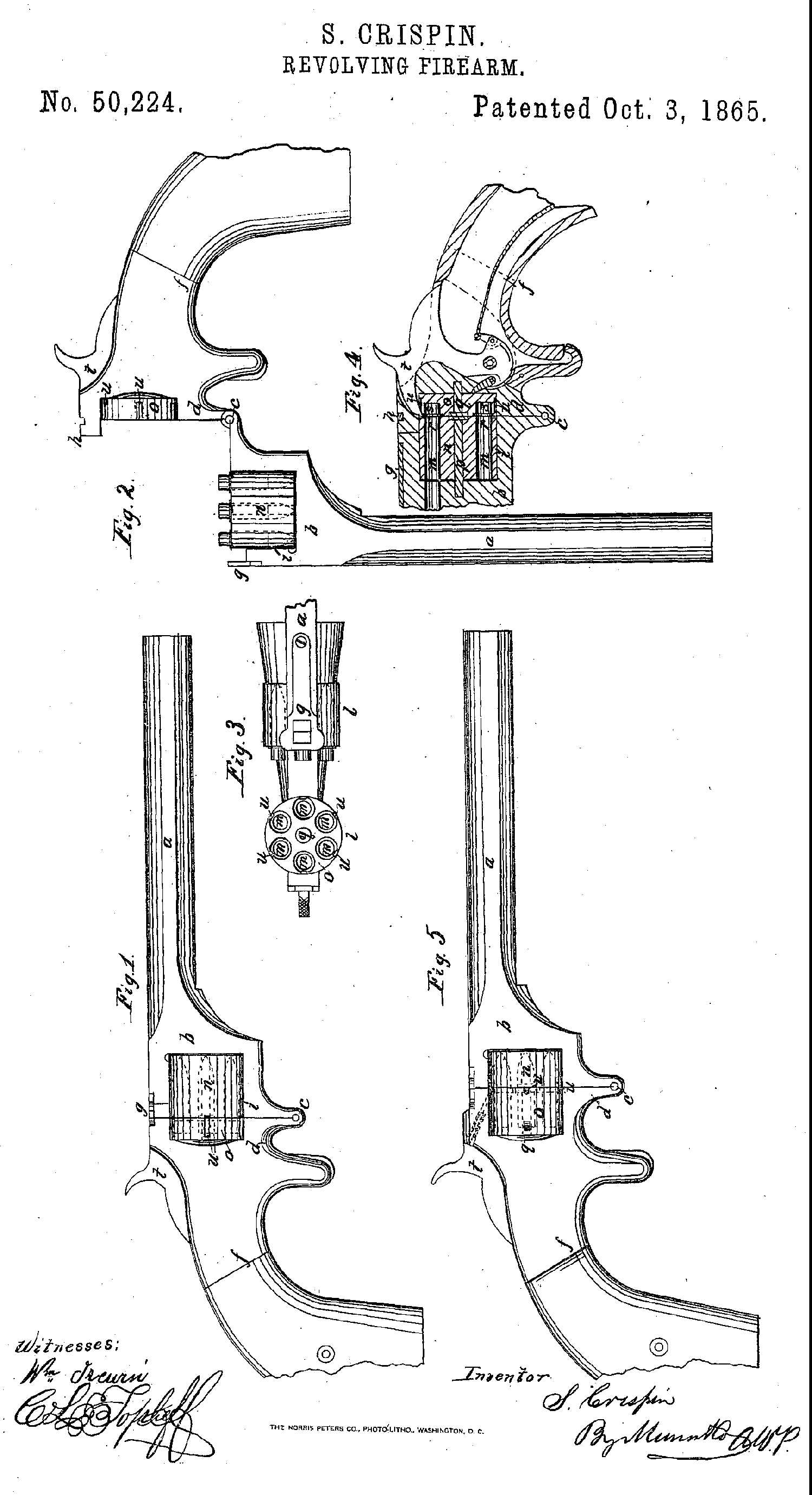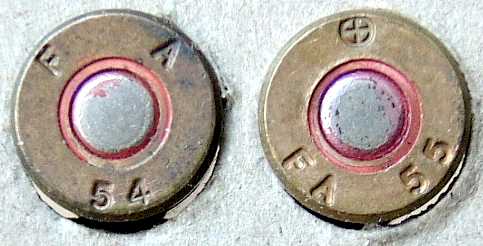|
THE CARTRIDGE COLLECTOR'S EXCHANGE |
| Contents
Cartridge
Lists
Prior Picture Pages:
Links to Other Sites
Cartridge Collectors Organizations:
Auctions:
Books:
Other Collector's Sites: |
Home of the Old Ammo Guy's Virtual
Cartridge Trading Table
Picture Page July 2009 The Crispin cartridges......
Silas Crispin, a U.S. Army Ordnance officer, held a number of cartridge patents issued in the 1860s, most of which related to cartridge case construction. His U.S. Patent #40,988, which he held jointly with Thomas Rodman, applied to a rolled cartridge case made either of brass foil and paper or brass foil alone. This rolled case construction was used extensively during the Civil War for producing ammunition for the breech-loading Gallagher and Smith carbines, and to a limited extent for Maynard and Burnside carbines, and the boxes for these cartridges will usually reference the Rodman & Crispin patent date of December 15, 1863. The Rodman & Crispin rolled cases were even employed on an experimental basis at the Frankford Arsenal in the early 1870s in .50-70 cartridge production. One of Silas Crispin's cartridges was covered by U.S. Patent #49,237, issued on August 8, 1865. The odd-looking .50 Crispin long cartridge shown here was produced under this patent, and is thought to have been intended for use in a Smith breech-loading carbine and to have been made by Ethan Allen. Crispin cartridges were produced in several pistol sizes for revolvers made by the Smith Arms Company of New York in the mid-to-late 1860s, both the cartridges and the firearms are quite rare. This cartridge design was one of many that were developed in an effort to circumvent the 1855 Rollin White patent on the bore-through revolver cylinder that was secured by Smith & Wesson in 1856. This patent granted Smith & Wesson exclusive rights to the bored-through cylinder, preventing other U.S. arms makers from producing revolvers using ammunition that was loaded through the rear of the cylinder for the 14 year duration of the patent. Consequently, many alternative loading methods and cartridge designs were pursued. Some of these were infringements on the Rollin White patent and its rear-loading, bored-through cylinder. Among these were revolvers made by Ethan Allen, Bacon Manufacturing Company, Manhattan Firearms Manufacturing Company, Moore's Patent Firearms Company, Lucius W. Pond, E. A. Prescott, James Reid, Springfield Arms Company, W.P. Uhlinger, and James Warner, all of which used standard rimfire cartridges. Smith & Wesson filed a lawsuit to protect the White patent, which they won in an 1862 court decision, and by 1863 all of the infringers had ceased production of their breech-loading revolvers. It should be noted that the U.S. Government was also prevented from manufacturing or contracting with other manufacturers besides Smith & Wesson for revolvers with bored-through cylinders. This may have been a factor in the denial in 1869 by the Commissioner of Patents of Smith & Wesson's application for a renewal of the White patent, which would have extended protection through the first quarter of 1883. Other cartridge and revolver designs were tried in the quest to come up with commercially successful methods of loading that did not require a bore-through cylinder. Resulting from these efforts were a number of cartridges that are fairly commonly found today, including the cup fire cartridges used in the Plant revolvers, Daniel Moore's teat-fire cartridges, and Colt's Thuer cartridges, all of which loaded from the front of the cylinder. Rather unique among the alternative weapons designs were the Crispin revolvers, which used a cylinder that separated into two parts when the revolver was broken open. The cartridges were loaded into the front half of the cylinder, which was attached to the barrel that pivoted open on a hinge on the lower part of the frame. On closing the barrel, the rear portions of the cartridges seated into the rear half of the cylinder, which was attached to the frame. None of these un-conventional cartridges or revolvers was a commercial success. This was due in part to the odd appearance and inherent weaknesses in the cartridges and the revolvers, and, not surprisingly, to the expiration of the Rollin White patent itself, which made the bore-through cylinder and conventional ammunition fair game for anyone to use. The patent drawings for the Crispin cartridge and revolver are shown below, as are the specifications for the cartridge. Noted among the advantages of the cartridge in the specifications are that it provided an efficient gas seal, could be rapidly loaded, and was easily removed with the fingers after firing.
. . . . . . . . . . . . . . . . .
. . . . . . . . . . . . . . . . . . . . . . . . . .
. . . . . . . . . . . . . . . . . . . . . . . . . . . .
An early FN NATO headstamped 7.62 x 51.......
. . . .
A box of Phoenix .38 long rimfire ..........
. .
|





 the
earliest headstamp for that facility with the NATO symbol is dated 1955.
the
earliest headstamp for that facility with the NATO symbol is dated 1955.